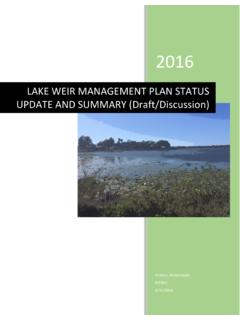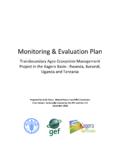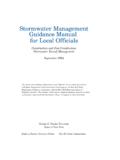Transcription of The Department Of Defense Explosives Safety Board ...
1 The Department Of Defense Explosives Safety Board Explosives Safety management Program evaluation process Eric Alchowiak Director, Program evaluation Division DoD Explosives Safety Board 2461 Eisenhower Avenue Hoffman 1, Rm 856C Alexandria, VA 22331-0600 (703) 325-0892 (221 DSN) 34th DDESB Explosives Safety Seminar Portland Marriott Downtown Waterfront Portland, Oregon 13-15 July 2010 Report Documentation PageForm ApprovedOMB No. 0704-0188 Public reporting burden for the collection of information is estimated to average 1 hour per response, including the time for reviewing instructions, searching existing data sources, gathering andmaintaining the data needed, and completing and reviewing the collection of information. Send comments regarding this burden estimate or any other aspect of this collection of information,including suggestions for reducing this burden, to Washington Headquarters Services, Directorate for Information Operations and Reports, 1215 Jefferson Davis Highway, Suite 1204, ArlingtonVA 22202-4302.
2 Respondents should be aware that notwithstanding any other provision of law, no person shall be subject to a penalty for failing to comply with a collection of information if itdoes not display a currently valid OMB control number. 1. REPORT DATE JUL 2010 2. REPORT TYPE N/A 3. DATES COVERED - 4. TITLE AND SUBTITLE The Department of Defense Explosives Safety Board (DDESB) ExplosivesSafety management Program evaluation process 5a. CONTRACT NUMBER 5b. GRANT NUMBER 5c. PROGRAM ELEMENT NUMBER 6. AUTHOR(S) 5d. PROJECT NUMBER 5e. TASK NUMBER 5f. WORK UNIT NUMBER 7. PERFORMING ORGANIZATION NAME(S) AND ADDRESS(ES) Program evaluation Division DoD Explosives Safety Board 2461 Eisenhower Avenue Hoffman 1, Rm 856C Alexandria, VA 22331-0600 8. PERFORMING ORGANIZATIONREPORT NUMBER 9.
3 SPONSORING/MONITORING AGENCY NAME(S) AND ADDRESS(ES) 10. SPONSOR/MONITOR S ACRONYM(S) 11. SPONSOR/MONITOR S REPORT NUMBER(S) 12. DISTRIBUTION/AVAILABILITY STATEMENT Approved for public release, distribution unlimited 13. SUPPLEMENTARY NOTES See also ADM002313. Department of Defense Explosives Safety Board Seminar (34th) held in Portland,Oregon on 13-15 July 2010, The original document contains color images. 14. ABSTRACT This paper describes, explains, and updates the status of the Department of Defense Explosives SafetyBoard s (DDESB s) Explosives Safety management Program (ESMP) evaluation process . The DDESBS taff completed the first ESMP evaluation year in FY2009 and began their second evaluation year. As partof the evaluation process , the DDESB Staff collected lessons learned and comments from the field on theStaff s implementation of the process .
4 Using this information, the Staff continuously assessed andimproved the process . Additionally, DDESB Staff observed that many Explosives Safety personnel and theirleadership do not fully understand the new methodology, which emphasizes identification of systemicproblems and emerging issues for improving the Service s and DoD s ESMP. To increase understanding ofthe ESMP process , this paper presents and discusses DDESB Staff s improvements and evaluation process mythology. 15. SUBJECT TERMS 16. SECURITY CLASSIFICATION OF: 17. LIMITATION OF ABSTRACT SAR 18. NUMBEROF PAGES 36 19a. NAME OFRESPONSIBLE PERSON a. REPORT unclassified b. ABSTRACT unclassified c. THIS PAGE unclassified Standard Form 298 (Rev. 8-98) Prescribed by ANSI Std Z39-18 The Department of Defense Explosives Safety Board (DDESB) Explosives Safety management Program evaluation process ABSTRACT Eric Alchowiak Director, Program evaluation Division DoD Explosives Safety Board 2461 Eisenhower Avenue Hoffman 1, Rm 856C Alexandria, VA 22331-0600 (703) 325-0892 (221 DSN) This paper describes, explains, and updates the status of the Department of Defense Explosives Safety Board 's (DDESB's) Explosives Safety management Program (ESMP) evaluation process .
5 The DDESB Staff completed the first ESMP evaluation year in FY2009 and began their second evaluation year. As part of the evaluation process , the DDESB Staff collected lessons learned and comments from the field on the Staff's implementation of the process . Using this information, the Staff continuously assessed and improved the process . Additionally, DDESB Staff observed that many Explosives Safety personnel and their leadership do not fully understand the new methodology, which emphasizes identification of systemic problems and emerging issues for improving the Service's and DoD's ESMP. To increase understanding of the ESMP process , this paper presents and discusses DDESB Staff's improvements and evaluation process mythology. The DDESB Explosives Safety management Program evaluation process Eric Alchowiak, 34th DDESB Explosives Safety Seminar 1 Explosives Safety management Program evaluation process The United States Department of Defense (DoD) Explosives Safety Program originated as a formal program in the aftermath of World War I when several ammunition storage areas were destroyed in a series of mishaps.
6 The most serious occurred at Lake Denmark Naval Ammunition Storage Depot, New Jersey, in July, 1926 when an electrical storm led to fires causing explosions and widespread destruction. The severe property damage and 19 fatalities led Congress to empower a Board of Army and Naval officers to investigate the Lake Denmark disaster and determine if similar conditions existed at other ammunition depots. The Board reported in its findings that this mishap could recur, prompting Congress to establish a permanent Board of officers to develop Explosives Safety standards and ensure compliance. This was accomplished when, in 1928, Congress passed 10 USC Section 172, Ammunition storage Board . 10 USC Section 172. Ammunition storage Board a. The Secretaries of the military departments, acting through a joint Board selected by them composed of officers, civilian officers and employees of the Department of Defense , or both, shall keep informed on stored supplies of ammunition and components thereof for use of the Army, Navy, Air Force, and Marine Corps, with particular regard to keeping those supplies properly dispersed and stored and to preventing hazardous conditions from arising to endanger life and property inside or outside of storage reservations.
7 B. The Board shall confer with and advise the Secretaries of the military departments in carrying out the recommendations in House Document No. 199 of the Seventieth Congress (10 USC 172 - Ammunition storage Board ). Figure 1: DDESB Publications The DDESB Explosives Safety management Program evaluation process Eric Alchowiak, 34th DDESB Explosives Safety Seminar 2 This organization evolved into the Department of Defense Explosives Safety Board (DDESB). Today, the DDESB authors Directive , Explosives Safety management and the DoD Explosives Safety Board (Directive), DoD Instruction , Explosives Safety management Program (Instruction), DoD , DoD Contractor s Safety Requirements for A&E, DoD , Ammunition and Explosives Safety Standards (Standard), and DoD , DoD Contractor s Safety Manual For Ammunition and Explosives (Contractor Safety Manual) (see Figure 1).
8 These publications fulfill half of their congressionally mandated mission of oversight and keeping military munitions properly dispersed. Figure 2: Munitions Life Cycle DDESB executes the second part of the Congressional mandate through an evaluation program, which forms DDESB core component for keeping informed on stored supplies of ammunition and components thereof for use of the Army, Navy, Air Force, and Marine Corps, with particular regard to keeping military munitions properly stored and preventing hazardous conditions arising to endanger health, life, property and environment damage inside or outside of current and former DoD installations developing, manufacturing, transporting, storing, using, demilitarizing, and cleaning up military munitions (10 USC 172 - Ammunition storage Board ) (see Figure 2).
9 In performing this core component, the DDESB s Staff oversees the DoD Explosives Safety management Program (ESMP) to enhance force protection and asset preservation in a way that preserves the Department s vital warfighting capabilities. The Staff accomplishes this by: The DDESB Explosives Safety management Program evaluation process Eric Alchowiak, 34th DDESB Explosives Safety Seminar 3 a. Evaluating the overall effectiveness and program performance of the DoD Components ESMP; b. Identifying Explosives Safety management issues requiring DoD policy changes or increased emphasis; c. Providing information to improve the DoD Components ESMP; d. Enabling the DDESB to be kept fully informed on ESMP-related issues; e. Identifying ESMP-related concerns, issues for action, responsible entity, and lessons learned; and f.
10 Helping to continuously improve DoD s and each Component ESMPs. The DDESB Explosives Safety management Program evaluation process Eric Alchowiak, 34th DDESB Explosives Safety Seminar 4 Evolution of evaluation process Prior to FY 2008, DDESB surveyed DoD installations manufacturing, storing, maintaining, and using ammunition and Explosives (A&E) on a rotating schedule. DDESB used these surveys to visit every installation and measure each installation s compliance with the Standard. Based on the DDESB s findings, DDESB required each installation having a noncompliance with the Standard to develop and forward a plan through their chain-of-command to correct noncompliance. In 1929, the then Department of War (Army) and Department of the Navy had only 36 installations.

















